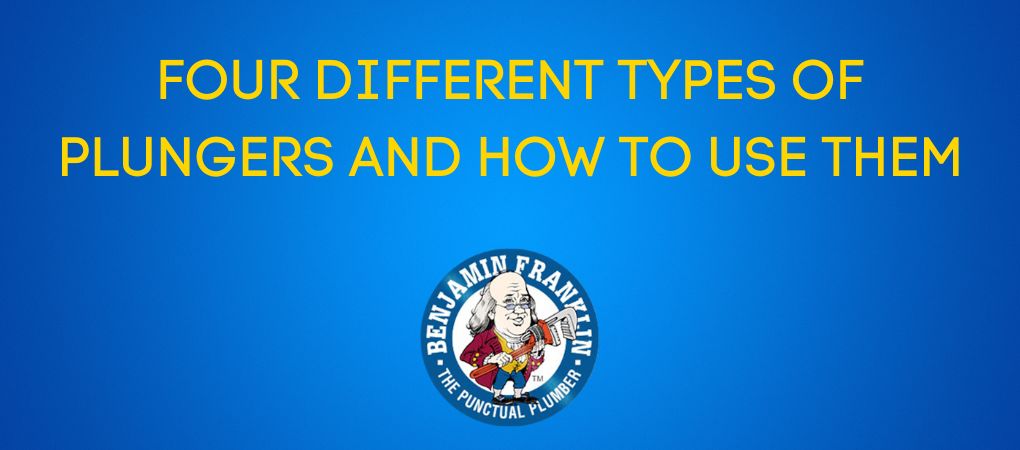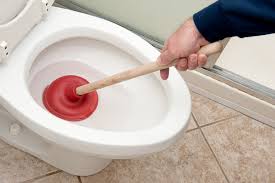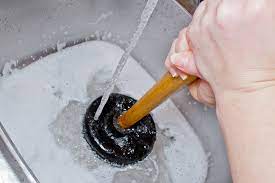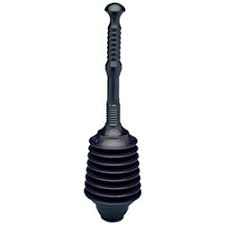
16 Jun Four Different Types of Plungers and How to Use Them
Did you know that there are different types of plungers, and each has a different use? Clogged toilets are the most common type of plumbing issue. While it may seem a minor inconvenience at first, a clogged toilet can cause lots of damage if not dealt with properly.
Clogged toilets can cause flooding, bacteria growth, mold development, and structural damage to pipes and other plumbing fixtures. These problems can cost you hundreds to thousands of dollars in repairs.
The best tool to unclog a toilet is a plunger. But did you know different types of plungers solve different problems?
Here at Benjamin Franklin Plumbing Tyler, we’ve identified four types of plungers and how to use them to unclog your toilet and prevent damage to your home.
| Content Breakdown |
|---|
Are there different types of plungers?
Yes! There are four main types.
Are all plungers the same?
No! Plungers come in different shapes and sizes, as well as different materials.
Are different types of plungers better than others?
It depends on the situation! Plungers can be used in most situations, but the trade-off is that they may not be as effective. Most plungers are designed for a specific situation, and are the best tool for a specific job but aren’t effective at all in other circumstances.
So, it depends!
What are the different types of plungers?
There are four main kinds!
-
The Standard Plunger / Flat Plunger

When you think of a plunger, this is likely the kind you imagine. It’s the old reliable plunger you see in most bathrooms. A standard plunger usually has a small rubber cup and a wooden pole.This plunger is designed for sink and shower drains. Because of the rubber cup’s design gets the most suction when used on a flat surface, like a sink. In addition, the rubber cup is excellent at creating a vacuum, helping unclog the sink.
Hold the plunger flat over the drain for good unclog.
It doesn’t work as well on a toilet, which doesn’t have a flat surface for the standard plunger to latch on to. It can work in a pinch, but it is not ideal.
-
A Toilet Plunger with a Flap / Flange Plunger

A toilet plunger with a flap is ideal for unclogging a toilet. A flange plunger is another name for this one. This plunger has a rubber cup similar to a standard plunger but with an added flap, called a flange, that encapsulates the rubber cup. This flap latches onto the toilet drain quite well, providing the suction needed to unclog the toilet.This type of plunger is the best all-around plunger. It works on toilets and flat surfaces like a sink or shower drain.
-
An Accordion Plunger

An accordion plunger is best suited for toilets. It has a smaller cup with a larger accordion-like plastic stem that collapses and expands as you press it to provide force to unclog the toilet.Since it is made of hard plastic, it can be more challenging to use effectively. It takes some force to push on it. But, if done right, it is the best at unclogging toilets.
Because it is so well designed for toilet use, it won’t work on flat surfaces such as sinks or shower drains. Therefore, do not attempt to use an accordion plunger on a flat surface unless you have no other options.
-
A Taze Plunger
Taze plungers are for large, typically industrial pipes. We don’t see them used in homes. A taze plunger fits the size of a pipe and is a steel rod with a disc at the end.
When a clog occurs, a professional will insert the rode into the pipe and push out the clog.
Once again, we do not recommend this type for homeowners.
5 Tips for How to Use Different Plungers
-
Plunge Up and Down
To make the best use of your pumps, press and lift the plunger up and down vertically. Do not plunge at an angle. You will not get good suction if you pump at an angle.
-
How to Create Suction
To get suction, press down on the plunger slowly. Don’t rapidly press up and down. This will not result in a good seal. Instead, a slow yet forceful pump creates a solid vacuum to undo the clog.
-
Add Water
A plunger won’t work on a dry surface. Water helps the rubber form a seal. This shouldn’t be a problem in a toilet, but add some water to a sink or shower to make it easier.
-
Check for Damage
Plungers can break, just like anything. For example, if there’s a crack in the rubber part of the plunger, then the plunger won’t form a vacuum seal. If your plunger is damaged, in any way, get a new one.
-
Wait After Using Chemicals
If you’ve done some drain cleaning with chemicals recently, don’t use a plunger. A plunger can shoot droplets of chemicals into the air that can be toxic if you inject them.
If you need to use a plunger and have recently administered chemicals, we recommend you wear a face mask to protect yourself. If you’ve got any extra masks, this would be an excellent way to use them!
In conclusion
We hope to have answered some of your questions about the types of plungers and how to use them.
Our last tip is to buy something nice, not twice. Different types of plungers of high quality will be easy to use and last longer than a cheap one. However, even quality plungers are relatively affordable, so go ahead and get a good one and save yourself the trip to the store when you desperately need one.
And if a clog is too much for a plunger to handle, give Benjamin Franklin Plumbing Tyler a call. We’ll send a licensed plumber to help as soon as we can.
Benjamin Franklin Plumbing Tyler serves the East Texas cities of Kilgore, Longview, Tyler, and Whitehouse with a team of certified plumbers. In addition to emergency plumbing repair, some of the plumbing services provided by the company include faucet repair, drain services, toilet repair, plumbing fixture installations, tub and shower installations, kitchen sink repair, faucet installation, water heater repair/replacement, and garbage disposal replacement. Call us today at (903) 730-6611 to schedule an appointment!

